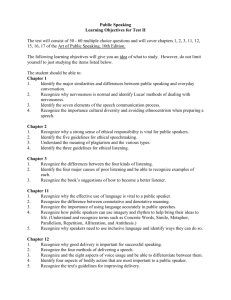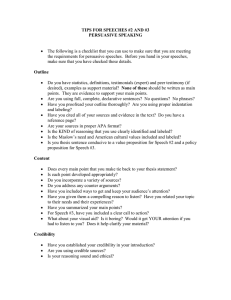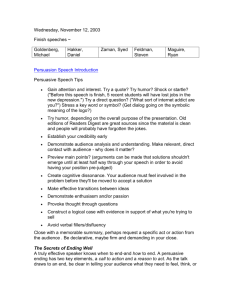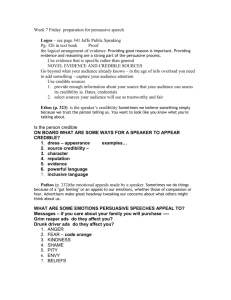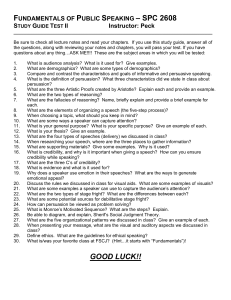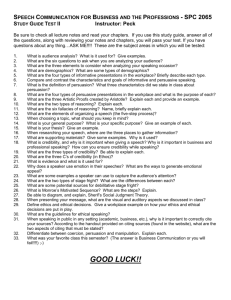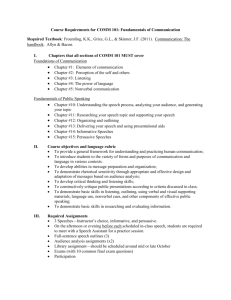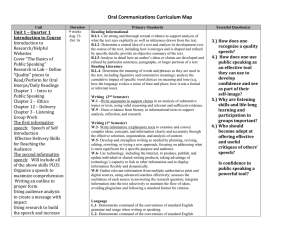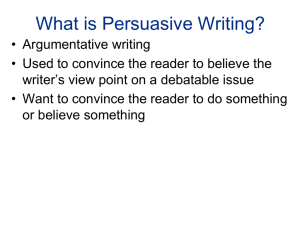Public Speaking Learning Objectives for Test II The test will consist
advertisement
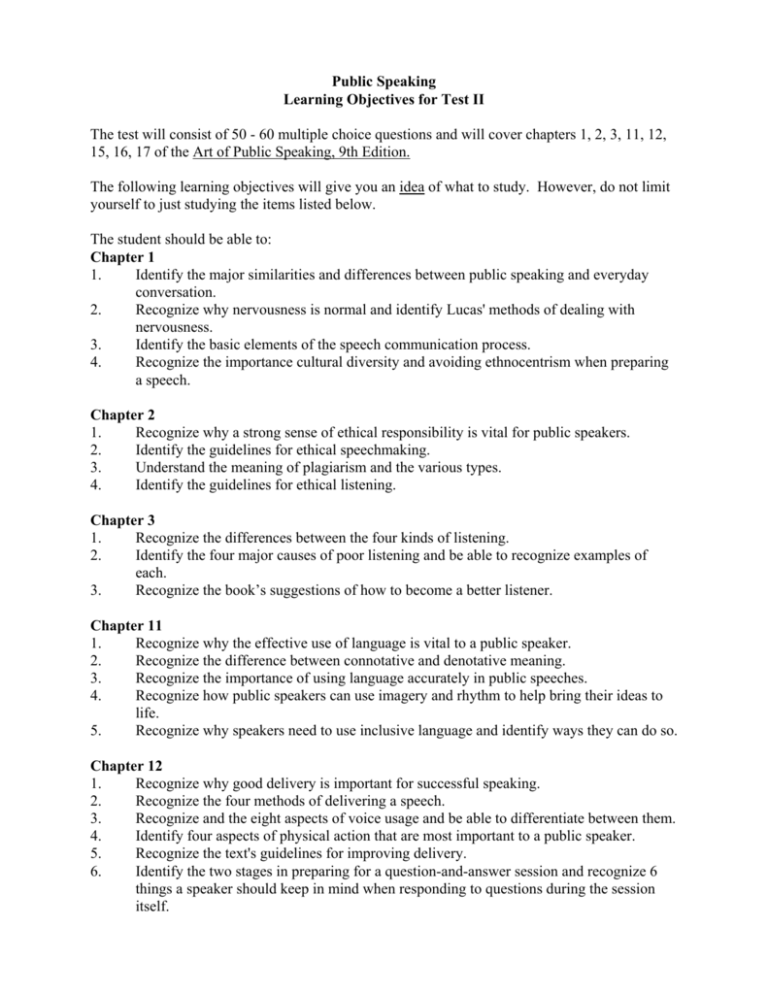
Public Speaking Learning Objectives for Test II The test will consist of 50 - 60 multiple choice questions and will cover chapters 1, 2, 3, 11, 12, 15, 16, 17 of the Art of Public Speaking, 9th Edition. The following learning objectives will give you an idea of what to study. However, do not limit yourself to just studying the items listed below. The student should be able to: Chapter 1 1. Identify the major similarities and differences between public speaking and everyday conversation. 2. Recognize why nervousness is normal and identify Lucas' methods of dealing with nervousness. 3. Identify the basic elements of the speech communication process. 4. Recognize the importance cultural diversity and avoiding ethnocentrism when preparing a speech. Chapter 2 1. Recognize why a strong sense of ethical responsibility is vital for public speakers. 2. Identify the guidelines for ethical speechmaking. 3. Understand the meaning of plagiarism and the various types. 4. Identify the guidelines for ethical listening. Chapter 3 1. Recognize the differences between the four kinds of listening. 2. Identify the four major causes of poor listening and be able to recognize examples of each. 3. Recognize the book’s suggestions of how to become a better listener. Chapter 11 1. Recognize why the effective use of language is vital to a public speaker. 2. Recognize the difference between connotative and denotative meaning. 3. Recognize the importance of using language accurately in public speeches. 4. Recognize how public speakers can use imagery and rhythm to help bring their ideas to life. 5. Recognize why speakers need to use inclusive language and identify ways they can do so. Chapter 12 1. Recognize why good delivery is important for successful speaking. 2. Recognize the four methods of delivering a speech. 3. Recognize and the eight aspects of voice usage and be able to differentiate between them. 4. Identify four aspects of physical action that are most important to a public speaker. 5. Recognize the text's guidelines for improving delivery. 6. Identify the two stages in preparing for a question-and-answer session and recognize 6 things a speaker should keep in mind when responding to questions during the session itself. Chapter 15 1. Recognize the differences between questions of fact, questions of value, and questions of policy. Be able to recognize examples of each. 2. Recognize the three basic issues of need, plan, and practicality and their importance in persuasive speeches on questions of policy. 3. Identify the concept of the target audience and its role in persuasive speaking. 4. Recognize the ways of organizing types persuasive speeches on questions of policy. 5. Identify the 5 steps of Monroe’s Motivated Sequence. Chapter 16 1. Identify factors that affect credibility. Differentiate between types of credibility (initial credibility, derived credibility, and terminal credibility). Recognize how you can enhance your credibility. 2. Recognize how using evidence affects persuasive speaking. 3. Identify the differences between reasoning from specific instances, reasoning from principle, causal reasoning, and analogical reasoning. Be able to recognize examples of each. 4. Identify the Red herring, ad hominem, either-or, bandwagon, and slippery slope fallacies. 5. Recognize the role of appealing to emotions in persuasive speeches. Chapter 17 1. Identify the guidelines for an effective speech of introduction. 2. Identify the purpose and major themes of a speech of presentation. 3. Identify the purpose and major themes of a speech of acceptance. 4. Identify the fundamental purpose of a commemorative speech and recognize why a successful commemorative speech depends so much on the creative use of language. 5. Recognize how an after-dinner speech differs from a speech to inform or persuade.
